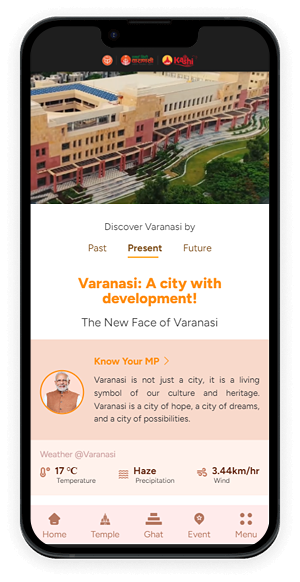के बारे में
Ahilyabai Ghat in Varanasi holds special importance as it was the first ghat in the city named after a person—Queen Ahilyabai Holkar of Indore. A ruler of the Holkar dynasty (1725–1795), she is remembered as one of India’s most remarkable leaders and a great patron of Hindu temples and sacred sites. Her devotion was reflected in the restoration of revered places such as the Kashi Vishwanath Temple, Somnath, and Rameshwaram. These acts were done not for recognition, but out of deep reverence and faith.
Born in Madhya Pradesh, she married Khanderao Holkar, heir to the Holkar dynasty, but after his untimely death, she assumed power as queen. Her reign was marked by good governance, infrastructure development, social welfare, and support for arts and culture. Though a devout Hindu, she promoted religious tolerance, ensuring her subjects could practice their faiths freely.
In 1785, Ahilyabai constructed this ghat, then known as Kewal Giri Ghat, along with a grand palace. The site also includes a monastery, barnyard, and Hanuman temple built under her supervision. The ghat’s architecture—with its staircases, courtyards, and intricately carved temples—reflects the elegance of the Holkar dynasty and her vision of creating sacred, community-centered spaces.
Ahilyabai Holkar defied traditional notions of women’s roles, proving herself a capable and benevolent ruler. Her legacy symbolizes the power of leadership rooted in service, devotion, and inclusivity. Today, Ahilyabai Ghat stands not only as an architectural marvel but also as a timeless reminder of how one woman’s dedication to faith, welfare, and harmony shaped history and continues to inspire generations.







